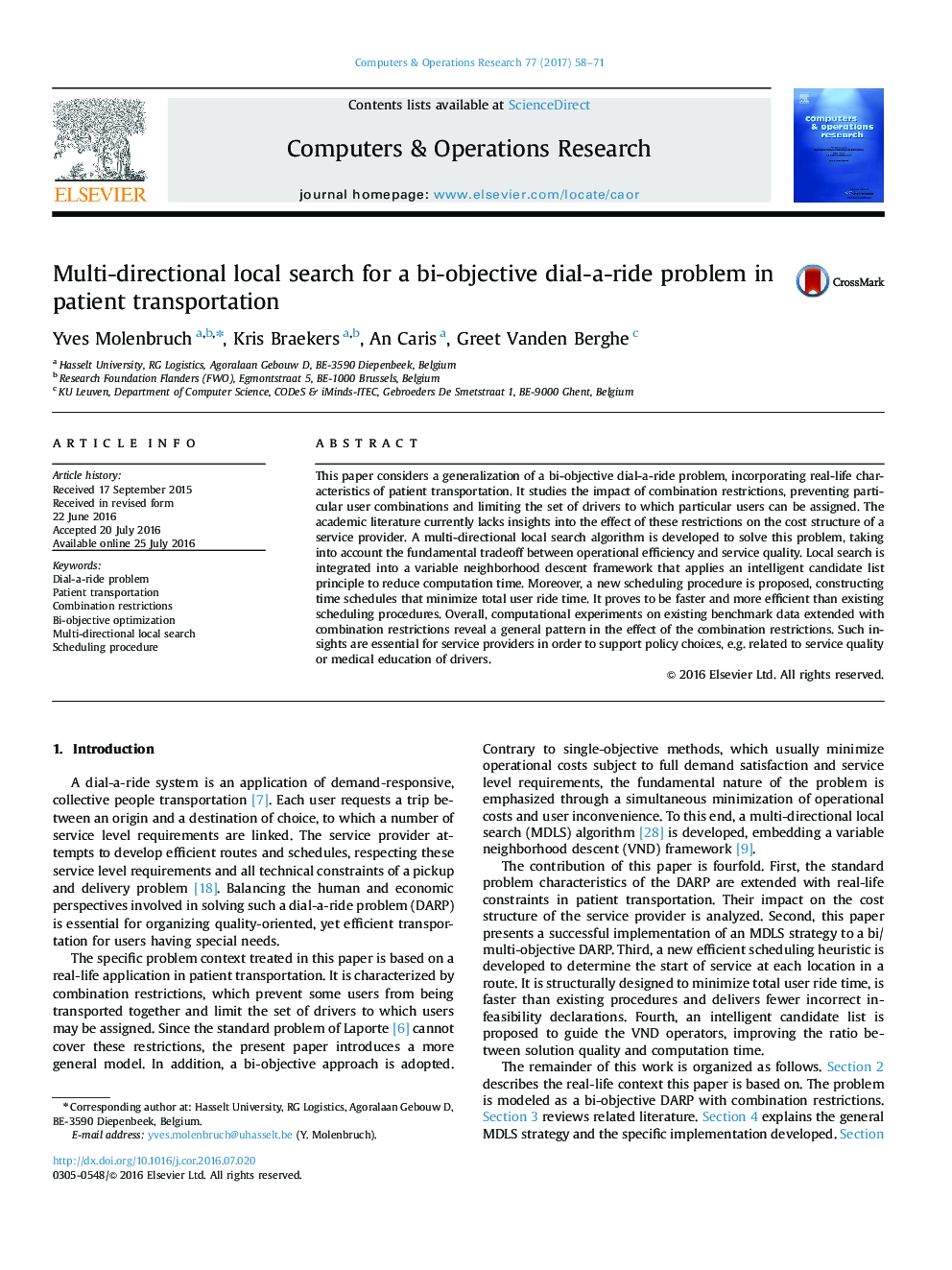| Article ID | Journal | Published Year | Pages | File Type |
|---|---|---|---|---|
| 474552 | Computers & Operations Research | 2017 | 14 Pages |
•The DARP is extended with combination restrictions and their cost impact is analyzed.•A successful implementation of an MDLS strategy to a bi-objective DARP is presented.•A new scheduling heuristic minimizes total user ride time in a fast and efficient way.•A candidate list principle improves computation times while performing local search.
This paper considers a generalization of a bi-objective dial-a-ride problem, incorporating real-life characteristics of patient transportation. It studies the impact of combination restrictions, preventing particular user combinations and limiting the set of drivers to which particular users can be assigned. The academic literature currently lacks insights into the effect of these restrictions on the cost structure of a service provider. A multi-directional local search algorithm is developed to solve this problem, taking into account the fundamental tradeoff between operational efficiency and service quality. Local search is integrated into a variable neighborhood descent framework that applies an intelligent candidate list principle to reduce computation time. Moreover, a new scheduling procedure is proposed, constructing time schedules that minimize total user ride time. It proves to be faster and more efficient than existing scheduling procedures. Overall, computational experiments on existing benchmark data extended with combination restrictions reveal a general pattern in the effect of the combination restrictions. Such insights are essential for service providers in order to support policy choices, e.g. related to service quality or medical education of drivers.
